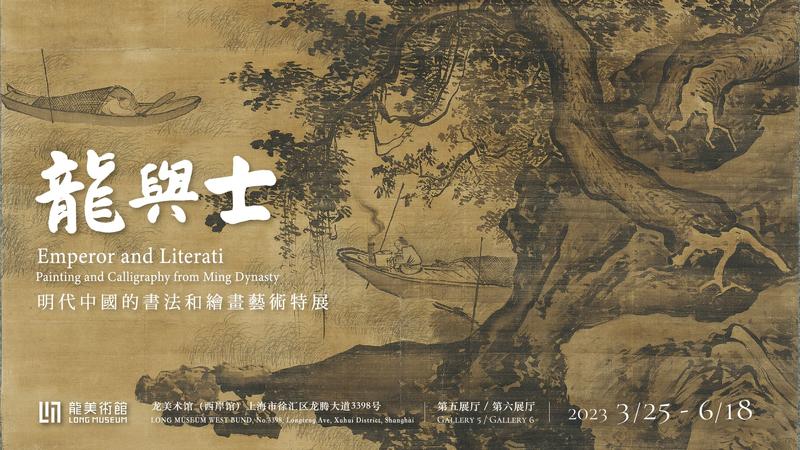 Worship In the Orchid Pavilion by Wen Zhengming (1470-1559) on display in Shanghai. (PHOTO PROVIDED TO CHINA DAILY)
Worship In the Orchid Pavilion by Wen Zhengming (1470-1559) on display in Shanghai. (PHOTO PROVIDED TO CHINA DAILY)
The Ming Dynasty (1368-1644) saw the height of imperial power, a massive development of the economy and a cultural blossoming. All were unmatched in the country's history to that point. The ongoing exhibition at the Long Museum West Bund in Shanghai is presenting 83 sets of paintings and calligraphy from the period, 20 of which will be on public display for the first time.
The exhibition, which opened on Saturday and runs through June 18, features some of the most valuable pieces from the collection of Liu Yiqian, founder of the Long Museum, over the past 30 years.
Among them are fans, hanging scrolls, album pages and handheld scrolls, some of which spread as long as 10 meters, that "collectively present a holistic landscape of the art history of the period", according to Xie Xiaodong, curator of the exhibition.
In the 276 years of the Ming Dynasty, there were 16 emperors. Liu was fascinated with the tumultuous stories of the imperial family: the founding emperor Zhu Yuanzhang started off as a deprived peasant; later in the dynasty an uncle usurped the throne from his nephew, the crown prince; one of the emperors, Yingzong, who personally led soldiers in battles against nomads was captured and forced to abdicate; and the last emperor Chongzhen hanged himself from a tree, which still stands in Jinshan park, when the rebels took the capital city Beijing.
"Drama and legends ran through the family," Liu says. "On the other hand, the Ming Dynasty fostered one of the most dynamic and booming cultural landscapes in the history of China and witnessed the emergence of some of the greatest artists, writers and thinkers of all time, whose influences still linger today."
 A poster for the exhibition. (PHOTO PROVIDED TO CHINA DAILY)
A poster for the exhibition. (PHOTO PROVIDED TO CHINA DAILY)
Literati paintings and calligraphy from the Ming Dynasty are always aspired treasures for art collectors, such as Liu.
"There were many times that when I added one new piece into the collection, I'd feel the thrill deep inside me for so long, even though I might appear composed," he says in the preface for the show.
With the title of Emperor and Literati: Painting and Calligraphy from Ming Dynasty, the exhibition highlights the aesthetics, moral pursuit and spiritual world of ancient Chinese intellectuals of the period.
Wang Wei, director of the museum and wife of Liu, sums up the core spirit of the literati quoting Confucian philosopher Mencius, which reads, "If poor, one should attend to their own virtue in solitude, if advanced to dignity, one should make the whole kingdom virtuous as well."
"They held fast to such faith despite the different choices they made in life," Wang says.
The artworks were created by more than 60 artists, covering a diversity of schools and styles.
While Confucianism remained the foundation of the political culture of the empire during the Ming Dynasty, Xie notices significant undermining of mutual respect between the emperor and his ministers, which was an important part of Confucian values.
"This phenomenon greatly affected the political ecology and contributed to the eventual collapse of the dynasty in the mid-17th century," Xie says.
If you go
Emperor and Literati: Painting and Calligraphy from Ming Dynasty
9 am-5:30 pm, Tuesday-Sunday, March 25-June 18.
Long Museum West Bund, 3398 Longteng Avenue, Xuhui district, Shanghai.
021-6877-8787


